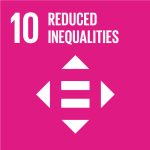Innovations in production chains (PROCISUR)
 Uruguay
Uruguay
 Chile
Chile
 France
France
 Peru
Peru
Executive Summary
The efficient and fair commercialization of family farming products is key to the improvement of this sector, so understanding and evaluating the new marketing strategies used by family farmers is of great importance. The project studied the following marketing strategies: a) Production chains (PC) that seek to link family farming with agroindustrial companies already inserted in the market, in order to supply them with raw materials and b ) Short circuits (SC), which are a form of commerce based on the direct sale of fresh or seasonal products, to minimize intermediation between family farmers and consumers.
The project had four components:
1. Characterization of institutional innovations in commercialization.
2. In-depth evaluation of the most relevant cases.
3. Exchange of experiences between actors in the production chains.
4. Generation of new conceptual and methodological tools to improve project management and the design and management of public policies. Ten cases of marketing strategies were evaluated and characterized in-depth, four related to production chains and six related to short circuits. Experiences were exchanged through three technical tours.
The project contributed to the dissemination of production chains and short circuits as new commercialization models for family farming in the region.
The technological solution
The new marketing strategies studied are the Production Chains (PC) and the Short Circuits (SC).
The PCs consist of linking the associations or groups of family producers with agroindustries already established in the market, ensuring on the one hand, the destination of the products and on the other, the supply of the primary products. The project analyzed four cases of PC: Sale of cocoa by APROCAFA to the National Chocolate Company, Colombia; Sale of organic cocoa from ACOPAGRO, Peru for export; Sale of banana and fruit juices by UNABENI to various municipalities, Bolivia; and Sale of fresh pork by CALUPROCERD to the Ministry of the Interior, Uruguay.
SCs consist of direct sales from family farmers to consumers through fairs, eliminating intermediaries. Six cases were analyzed: Fairs of PROHUERTA, Argentina; Rural Markets of Bogotá, Colombia; Rede Raízes da Mata Basket, Brazil; Hands of the Earth Fair, Argentina; Community basket Utopia, Ecuador and Short Circuit Fairs in the Los Ríos Region, Chile.
These systems generated economic, social and environmental benefits: better income, better working conditions, motivation, employment opportunities for the family, greater commitment, access to education, and social mobilization.
Results
The project had a methodological contribution and an empirical one for the design of public policies in marketing strategies for family farming. Some recommended characteristics for the design of public policies are: the organization of producers, the leadership to initiate and sustain the experiences, and the relevance of the State as a generator of opportunities for commercialization.
A document was prepared indicating the advantages and disadvantages of the 10 marketing strategies characterized and evaluated. 490 interviews were conducted on commercialization in family farming, involving producers, consumers, buyers, researchers and policy makers. For approximately 90% of producers, the main marketing channel for their products is the studied SC or PC. On average, 46% of the income of family producers comes from short circuits. 52% of producers participating in PC and 40% of producers participating in SC receive technical advice from the organization in which they participate. For 60% of producers, these forms of marketing have lower transaction costs.
Ten results dissemination workshops were held involving a total of more than 150 attendees, three exchange tours were conducted with a total of 109 people (38% family producers), and a final international symposium was carried out with 80 participants. Three publications, 10 case study reports and 20 case study data sheets were produced. Presentations were made at six technical meetings, 10 workshops and a final international symposium.
Beneficiaries
DIRECT BENEFICIARIES
• Exchange tours: 109 participants (38% family farmers)
• Dissemination workshops: at least 150 people
• International Seminar: 80 people
• Publication of project results: technical manual (1,000 people) and WEB page (at least 100,000 people), other project documents.
INDIRECT BENEFICIARIES
Hundreds of thousands of family farmers from Argentina, Bolivia, Brazil, Chile, Paraguay, Peru and Uruguay
Sustainable Development Goals


Participating Organizations
Executor
- Programa Cooperativo para el Desarrollo Tecnológico Agroalimentario y Agroindustrial del Cono Sur (PROCISUR) - Uruguay
Associated
- CEPAL - Chile
- CIRAD - Francia
- Instituto Interamericano de Cooperación para la Agricultura (IICA) - Perú
Graphics and data
Financing by country (in USD)


























